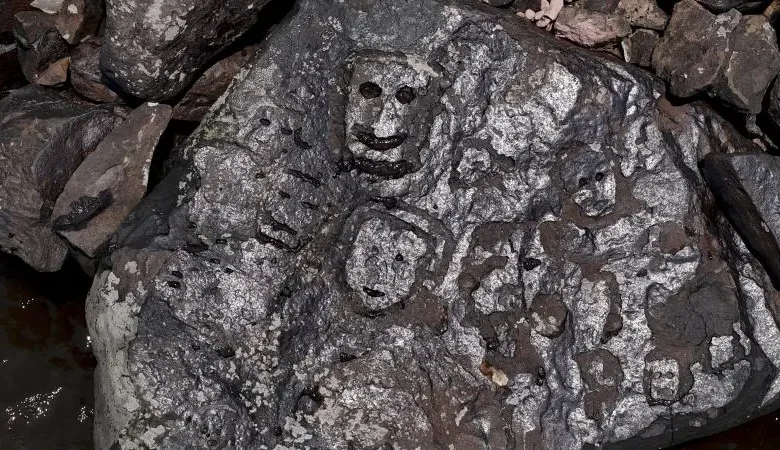Brazilian Amazon drought reveals ancient inscriptions

As the Brazilian Amazon region continues to experience extreme drought, the water levels of several rivers have dropped significantly, leading to the exposure of rocks bearing inscriptions that could date back over 2000 years.
The engravings, which resemble human faces and expressions, were covered by the waters of the Rio Negro River, but the severe drought in the region led to the river’s flow dropping to its lowest level in over a century.
Brazilian Amazon drought reveals ancient inscriptions

(Photo by Michael Dantas / AFP)
The appearance of the inscriptions due to drought is surprising to many, although it has excited scholars. However, along with its newfound excitement, the drought has caused major problems in river navigation, which is essential to supplying remote communities with essential supplies.
Experts say the situation has been exacerbated by El Niño, a periodic weather phenomenon over the Pacific Ocean that reduces cloud formation and precipitation.
As a result, the situation has worried many about the future of the river and its inhabitants. Livia Ribeiro, a resident of Manaus in Amazonas state, confirms that it is wonderful to see the inscriptions, but it is also worrying. River navigation problems have an adverse impact on the economy and daily life of remote communities.

(Photo by Michael Dantas / AFP)
Furthermore, the rising water temperatures due to climate change could be adding further stress to the river, potentially rendering it uninhabitable.
Severe droughts like this are not new to the Amazon, a similar drought in 2010 led to the discovery of these engravings in the first place. In the years since, the engravings have become an archeological site of great importance, as they allow a better understanding of the first inhabitants of the region, providing valuable insights into the history of the region.
The Praia das Lajes site is an invaluable archeological site that provides insights into the history of the Brazilian Amazon region’s first inhabitants. The site’s engraved rocks give testimony of emotions and feelings.
Its importance lies in the lack of existing research or understanding of the region’s first inhabitants. While recent drought has uncovered the engravings, returning the rivers to their natural flow and preserving the inscriptions submerged under water is necessary for its continued preservation and understanding.
Climate change raises further questions about our environment and the need to protect ecological systems.










